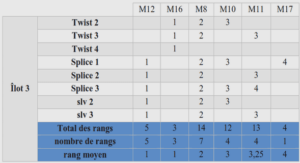Chen, Xiaowei (Fuzhou University, Fuzhou, China)
My presentation aims to explore the underlying rationale behind the use of challenges (or dares) in the courts of classical Athens. In particular, by examining the speeches surviving in the canon of the Attic orators (ca. 420-320 BCE), I aim to uncover the psychological causes and effects of the rhetorical manipulation of the forensic procedure of basanos (‘evidentiary torture’). Although the practical application of this procedure is questionable, its presence in the form of rhetorical challenge is widespread and calls for analysis. Most Athenian trials were triggered by (hard to prove) factual disputes. Persuasive rhetoric formed the main way for a litigant to prove his case. In order to support his narrative, one could use the testimony of servants by resorting to basanos, whereby he issued a challenge offering his own or requesting his opponent’s slaves for interrogation. The procedural inflexibility of this institution usually gave rise to disagreement between the parties, providing rhetorical advantage to the initiator and a disadvantage to the refusing party. My treatment of the issue touches the heart of the ‘evidentiary torture’ since it provides an exegesis of the significant impact of this institution to the minds of the jurors. I aim to explain how the Greek ideas of rational decision-making and explanation of human action formed the reasons behind the rhetorical tactics surrounding this procedure. The Greek ‘action-theory’ opposes the Cartesian model of the human mind which interprets human action as conscious acts of a person exercising autonomy of the will in every single instance of his life. By contrast, the Greek inferential reasoning interpreted human action as motivated by reasons and reasoning drawn from previous experience. Taking the form of a ‘means-end’ type of rational calculation, consistency between the ‘means’ used, the ‘end’ to be achieved and the ‘motive’ behind the action proved the honesty of a litigant’s rhetoric.
Any discrepancy between these three pillars of human action could be severely damaging. Thus, a litigant stating his willingness to help the court to discover the truth (‘end’) in order to promote justice (‘motive’) should provide the ‘means’ by accepting the challenge of basanos.CelestinaRhetoric in the classical antiquity regarded gestures as a part of the delivery or actio that should be subordinated to the speech (Aristotle, Quintilian). However, 16th- and 17th-century authors such as Arias Montano in his biblical commentaries (1571), Giovanni Bonifacio in his L’arte de’ Cenni (1616), or John Bulwer in The Chirologia and Chironomia (1644) conceived of them as a transnational language that would make possible a greater understanding among men. In the same light, the commissioned engravings of theatrical editions, such as the famous illustrations of the comedies of Terence (Strasburg: Johann Grüninger, 1496), were said to be able to unfold the plot of a play to an illiterate man, with no need to read it. Plots, therefore, aimed at relying on depicted gestures, postures, and clothing to tell the story of a comedy. Following the model of the editions of Terence, a pan European bestseller like La Celestina (Burgos, 1499) relied on its woodcuts to present the readers with different interpretations of the play. The woodcuts accompanying some of its early editions have been studied as belonging to the avant-garde of the printing press (Burgos: Fadrique de Basilea, 1499) or as a commercial model through the depiction of violence (Seville: Cromberger, 1535).
Building upon this scholarship, my paper will explore how printers and illustrators codified the text through the specific gestures represented in the woodcuts of Spanish and Italian editions. In particular I will study how these gestures relate with the different readings in contemporary treatises such as Bonifacio or Bulwer, and what they are able to tell us about contemporary dramatic theories and the movements of the actors on the stage. These illustrations allow us to see how some early modern readers perceived the work and how they positioned themselves within contemporary debates on decorum, or on the art of oratory, especially in the case of those 16th-century editions in which a new set of woodcuts was created for the occasion.In Le courage de la vérité, Michel Foucault elaborates an account of the rhetorical practice of parrhesia as an anti-rhetorical mode of fearless speech. In this paper, I analyze Karl August von Hardenberg’s Rigaer Denkschrift (1807) as an instance of “monarchic parrhesia”, the license that an adviser to the king may take. The military defeat at the hand of Napoleon in 1806 provided the opportunity for a sober analysis of Prussia’s political crisis, an analysis that initiated the contradictory process of political liberalization known as “Preußische Reformen” (1807-1819). Hardenberg goes to great rhetorical lengths to authorize his frankness towards the addressee of his discourse, King Frederick III. Throughout the memorandum, he polemicizes against flattery and calls for a politics of truth (“eine ehrliche, gerade, treue Politik ohne List und Trug”) both towards Napoleon and the Prussian people. Arguably, parrhesia is not only the form of Hardenberg’s discourse, but it is at the center of his conception of post-revolutionary politics.



